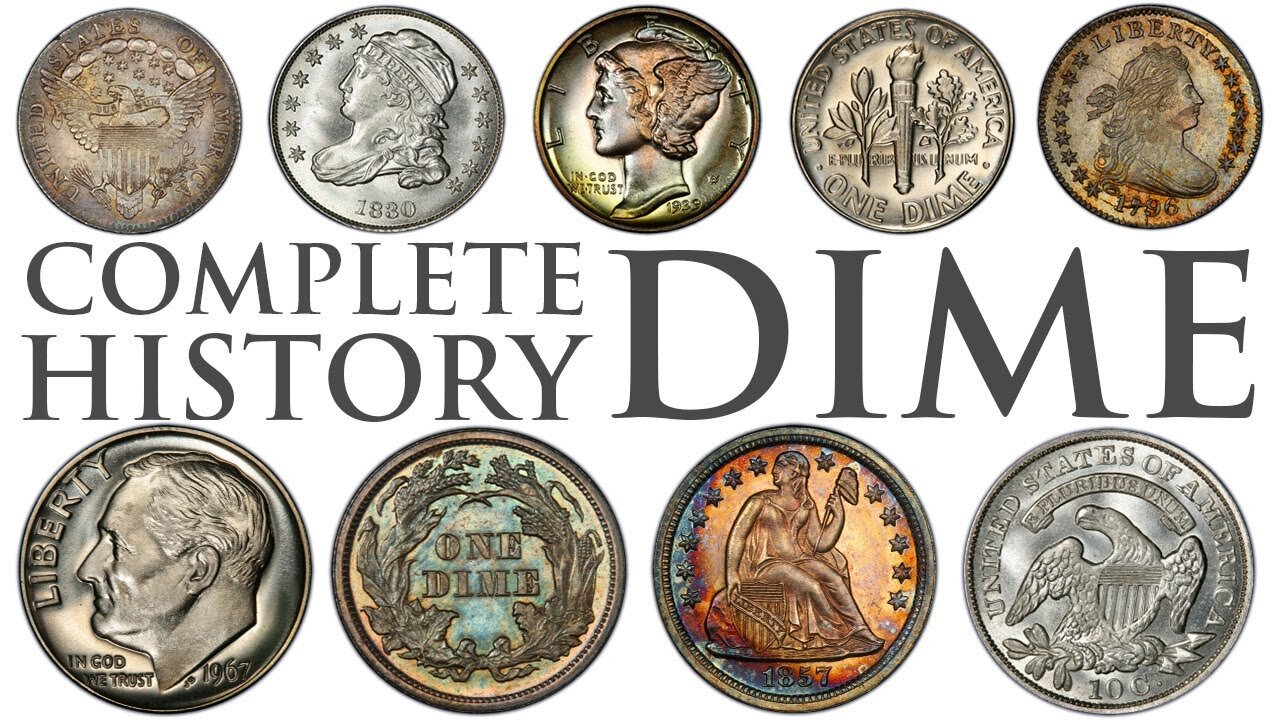Premium Only Content

The Complete History of the United States Dime
The “Roosevelt” theme is the current design of the U.S. 10-cent coin. The U.S. Mint first issued this design in 1946, soon after the death of President Franklin D. Roosevelt. The Mint released it on January 30 of that year to honor his birthday. The obverse (heads) shows Roosevelt’s profile. The torch, olive branch, and oak branch on the reverse (tails) represent liberty, peace, and strength.
The dime was a logical choice for honoring Roosevelt because he supported the March of Dimes, a program that raised funds for research to find a cure for polio. He contracted polio when he was 39 years old.
The Mint made the first dimes in 1796. They were small silver coins. The designs from 1796 to 1837 showed Liberty on the obverse and an eagle on the reverse. In 1837, a wreath design replaced the eagle. Liberty, in various forms, stayed on the dime until 1946.
From 1916 to 1945, the Mint produced the “Mercury” dime designed by Adolph A. Weinman. The obverse showed a profile of Liberty wearing a cap with wings to represent freedom of thought. The design got its name because it reminded people of the Roman god, Mercury. A fasces – a bundle of rods tied around an axe – and an olive branch appeared on the reverse. The two symbols represented America’s military readiness and the desire for peace. The Mercury dime is considered one of the most beautiful coins in our country’s history.
In 1965, the Mint removed silver from the dime and the composition became copper-nickel clad.
-
 LIVE
LIVE
TimcastIRL
1 hour agoTrump DOJ To Ban Trans People From Owning Guns After Catholic School Shooting | Timcast IRL
23,851 watching -

Glenn Greenwald
3 hours agoTrump and Rubio Apply Panama Regime Change Playbook to Venezuela; Michael Tracey is Kicked-Out of Epstein Press Conference; RFK Senate Hearing | SYSTEM UPDATE #508
60.7K42 -
 LIVE
LIVE
Rallied
2 hours ago $0.76 earnedWarzone Solo Challenges
395 watching -
 57:40
57:40
MattMorseTV
2 hours ago $2.84 earned🔴Trump just SHATTERED the RECORD.🔴
9.69K42 -
 LIVE
LIVE
Total Horse Channel
4 hours ago2025 CSI3* A Coruña Porsche - Grand Prix
66 watching -
 LIVE
LIVE
Badlands Media
15 hours agoThe SITREP Ep. 128
423 watching -
 LIVE
LIVE
Mally_Mouse
1 hour agoThrowback Thursday! Let's Play: Cuphead
125 watching -
 LIVE
LIVE
StevieTLIVE
1 hour agoWarzone HYPE Duos with GloryJean
26 watching -
 1:05:11
1:05:11
Donald Trump Jr.
3 hours agoBuilding the Future with American Bitcoin, Plus Eric's Triggered Debut! | TRIGGERED Ep.272
94.2K53 -
 LIVE
LIVE
MissesMaam
6 hours agoLetting a Game from 2009 RageBait Me | Achievement Hunting PVZ 💚✨
42 watching